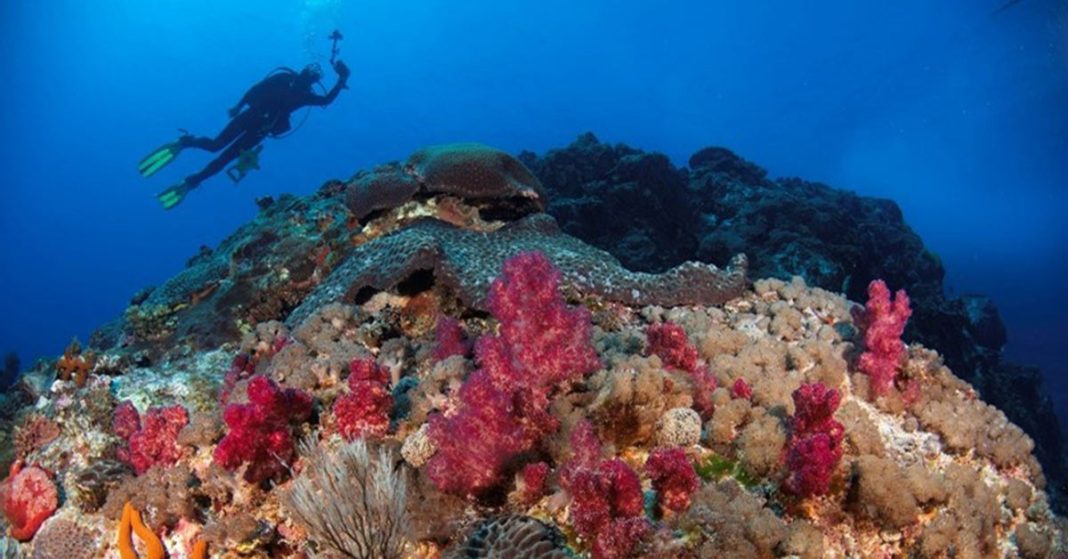By Caitlin Woods
Owing to the extraordinary diversity of fish, invertebrates, and corals in Lord Howe waters (a mix of tropical, temperate, and endemic species), the State and Commonwealth Governments proclaimed a Marine Park jointly in 1999. After extensive consultation with the Island community, a Plan of Management was enacted in 2004.
Over fifty different institutions or organisations have been involved in research inside the Island’s Marine Park. These include Australian and international government research institutions and government departments, Australian and international museums, Australian and international universities or research organisations, and private consultants.
However, a number of these organisations still find it extremely valuable to co-opt “citizen scientists”, to assist with ongoing surveys that monitor the health and diversity of species inside the Marine Park.
Citizen science volunteers currently assist with:
Reef Life Survey
Undertaken by visiting and resident volunteer divers, these surveys have been undertaken every two years since 2006, contributing to an important long-term data set for monitoring ecological changes in the marine park. RLS is an Australian citizen science project, and their website is a fantastic resource to learn about their efforts and approach to citizen science. Find their website here.
The organisation has also launched an online interactive tool, Reef Life Explorer, to make information about global reef health more accessible. Find it here.
Project Kingfish
Project Kingfish is a large collaborative research program funded by the New South Wales Recreational Fishing Trust. It aims to sample and satellite tag spawning-sized yellowtail kingfish caught in coastal and offshore waters across south-eastern Australia, including around Lord Howe Island, to gather insights about their regional population structure and important habitats (e.g. spawning locations to inform the sustainable management of the east Australian stock. For further information visit here.
Other citizen science projects include:
- Marine debris collection and sorting for the National Marine Debris Database facilitated by Tangaroa Blue
- McCulloch’s anemonefish monitoring since 2009
- Seaweed herbarium
- Coral health surveys and monitoring
- Annual Sea Slug Census
In addition to these organised Citizen Science Projects, Lord Howe Island residents have always played a vital role in documenting the biodiversity of the Marine Park. They have assisted the Australian Museum in recording marine biodiversity around the Island for over 120 years by donating specimens and recording unusual observations. This legacy is evident in the naming of some marine species: for example the cuttlefish, Sepia baxteri, after the Robert Baxter and Booth’s pipefish, Halicampus boothae, after Julie Booth, both of whom sent many specimens to the Australian Museum.
To this day, Island residents still regularly report unusual observations to Marine Park staff, including beach-washed fish and invertebrates, hull-fouling seaweeds, and unusual fish catches or fish stomach contents. As a result, several new marine species are added to biodiversity lists for the Marine Park each year, and many valuable specimens to science are donated to the Australian Museum. Just this week, fisher Ellis Whitfield photographed a beautiful deep-sea fish that is extremely rare or new to science and has never been recorded in the Marine Park.


